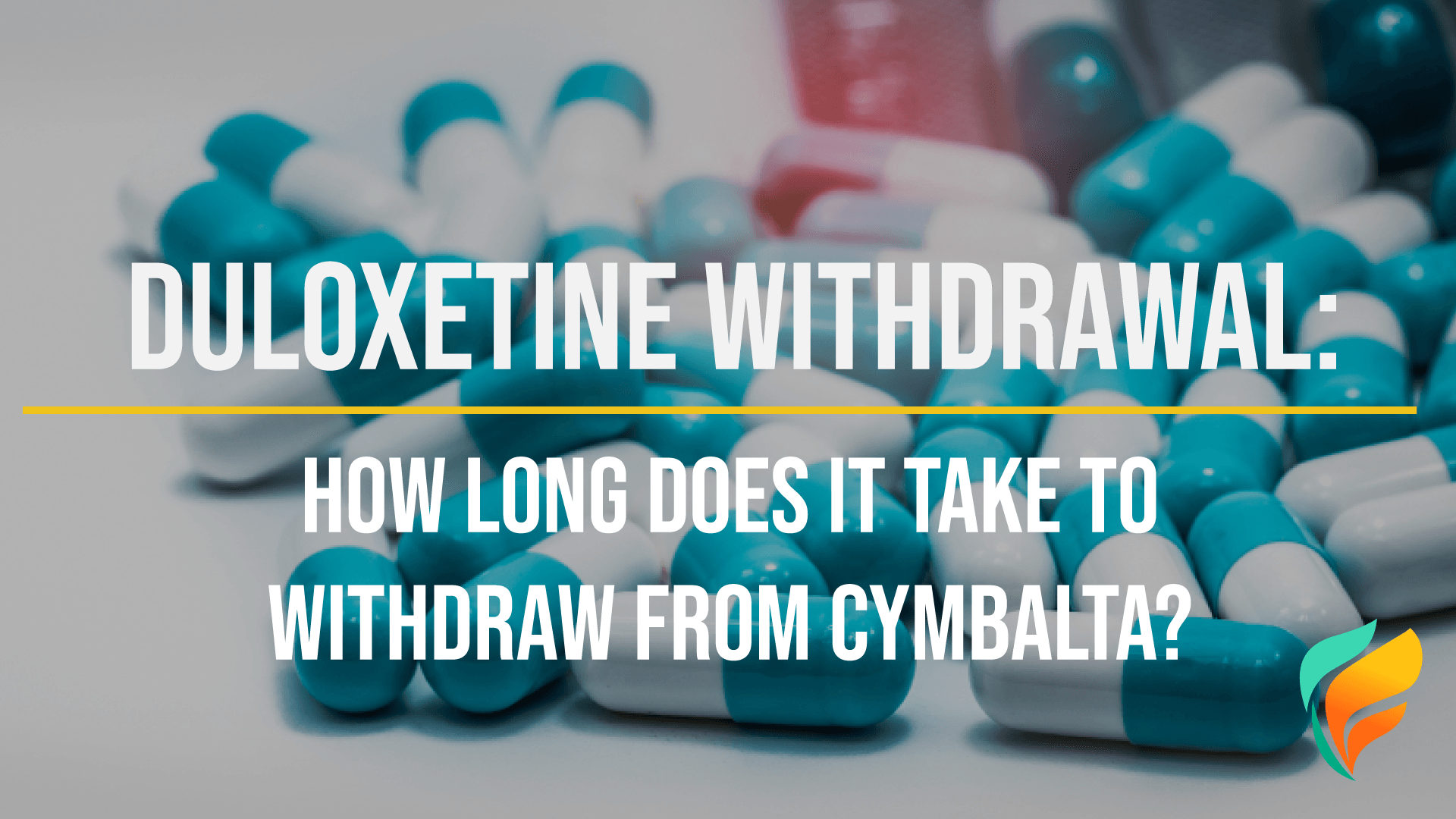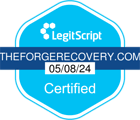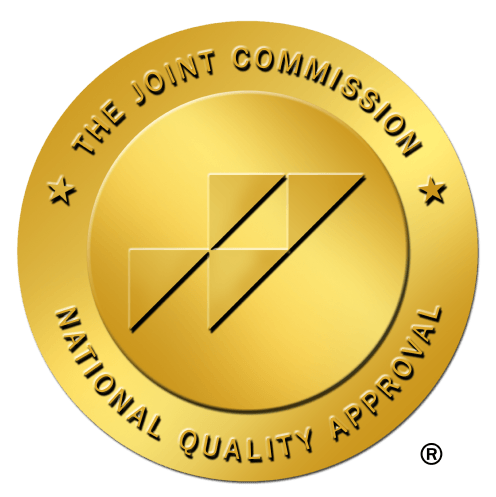Duloxetine Withdrawal Timeline: What to Expect When Withdrawing From Cymbalta


The duloxetine withdrawal timeline can take longer than you think. If you're considering quitting Cymbalta, you need to know what to expect.
Understanding the journey of duloxetine withdrawal can be challenging. Duloxetine, often known by its brand name Cymbalta, is commonly prescribed for depression, anxiety, and chronic pain. If you or a loved one, especially duloxetine patients, is navigating withdrawal from this medication, knowing what to expect with cymbalta discontinuation syndrome can provide comfort and clarity.
This guide aims to outline the duloxetine withdrawal timeline, helping you recognize symptoms and offering strategies to manage them. By understanding this process, you can take steps towards a healthier, more stable future.
What Is Duloxetine?
Duloxetine is a medication used to treat mental health issues and chronic pain. It belongs to the group of medications known as serotonin-norepinephrine reuptake inhibitors (SNRIs), which affect brain chemicals that regulate mood and pain.
How Does Duloxetine Work?
Duloxetine is available as capsules or tablets. It increases serotonin and norepinephrine, crucial neurotransmitters for mood and pain control. By slowing their reabsorption in the brain, duloxetine allows more of these neurotransmitters to remain in synapses, reducing pain signals and improving mood.
Evolution of Usage and Regulations
Approved by the FDA in 2004 for major depressive disorder, duloxetine's use has expanded to treat fibromyalgia, chronic musculoskeletal pain, neuropathic pain, and generalized anxiety disorder. It is a prescription medication, ensuring users receive proper medical guidance.
Tips About Taking Duloxetine
Consult a healthcare professional before starting duloxetine. They will determine the appropriate dose and monitor your treatment. Duloxetine is taken orally, and it’s crucial to follow your doctor's instructions. Do not abruptly stop taking duloxetine without consulting your doctor, as it can cause withdrawal symptoms. Gradual tapering is often recommended under medical supervision.
Is Duloxetine Addictive?
Duloxetine, commonly known by the brand name Cymbalta, is not considered addictive. It is classified as a serotonin-norepinephrine reuptake inhibitor (SNRI) and is used to treat conditions such as depression, anxiety, and chronic pain. Unlike some other medications used to treat these conditions, duloxetine does not typically lead to physical dependence or withdrawal symptoms when discontinued.
However, it is important to follow your healthcare provider's instructions when taking duloxetine to minimize any potential risks and side effects. If you have concerns about addiction or dependence, be sure to discuss them with your doctor.
Are You Struggling with Mental Health or Addiction?
We Can Help. Call Us Now!
CALL: 877-839-1772
Duloxetine Withdrawal Timeline
The Duloxetine withdrawal timeline varies from person to person. It is mainly influenced by the dosage, duration of use, and reaction of the individual's body to the medication. Here is a rough outline of what to expect during the withdrawal process:
Duloxetine Withdrawal Timeline: Early Symptoms (1-2 Days)
You might not notice any major changes in the first few days after stopping duloxetine. However, it could start to show signs. Mood swings, heightened irritation, and increased anxiety are a few of them.
Some people report experiencing what is sometimes referred to as "brain zaps" or "electric shocks," which are short, shocking sensations in the head or body.
Duloxetine Withdrawal Timeline: Acute Phase (1-2 Weeks)
Withdrawal symptoms may get worse as you move through the first week or two. It's possible to experience physical symptoms, including nausea, headaches, dizziness, and gastrointestinal pain.
This stage might see the emergence of mood problems such as increased anxiety, depression, and emotional instability. It's usual to have emotional rollercoaster-like feelings.
Duloxetine Withdrawal Timeline: Peak Withdrawal (2-4 Weeks)
The most difficult weeks of withdrawal are frequently the second and third ones. During this time, withdrawal symptoms may be at their most intense and uncomfortable phase.
Physical pain, such as tiredness and sleep difficulties, and the feeling of brain "zaps" can continue.
Emotionally, you may experience mood swings, increased irritability, and periods of depression. These signs might be pretty upsetting.
Duloxetine Withdrawal Timeline: Subsiding Symptoms (4-8 Weeks)
Many people start to experience a gradual reduction in the severity of their withdrawal symptoms by the fourth week. Physical pain, including nausea and dizziness, may start to go away.
Even though some people may continue to suffer mood swings or occasional feelings of sadness, these emotional symptoms frequently improve as well.
During this stage, practice patience because it may take some time to recover to a stable mental and physical condition.
Duloxetine Withdrawal Timeline: Residual Effects
The remaining symptoms may last for several months in some people, especially those who have taken duloxetine for a long time. These signs may appear in the form of slight physical discomfort or occasional mood or sleep issues.
Keeping in touch with a healthcare professional frequently during this stage is needed. They can provide continuous support and direction, suggest coping mechanisms, or, if required, suggest additional treatments.
Duloxetine Withdrawal Timeline: Full Recovery
Most people will eventually fully recover from Duloxetine withdrawal symptoms. However, each person's recovery process takes a different duration of time.
The duration of time it takes a person to fully recover can depend on a variety of variables, including their general health, how long they've been on duloxetine, and any additional support or treatments.
Duloxetine Withdrawal Symptoms
The following is a list of common Duloxetine withdrawal symptoms:
Mood swings
Irritability
Anxiety
Depression
Electric shock sensations
Dizziness
Nausea
Headaches
Gastrointestinal discomfort
Fatigue
Sleep disturbances
Emotional instability
Heightened sensitivity to sensory stimuli such as sound, light, touch
Flu-like symptoms
Decreased concentration and focus
Muscle aches or pain
Restlessness
Changes in appetite
Vivid dreams or nightmares
Sweating
Chills or hot flashes
Tingling or numbness in extremities
Suicidal thoughts
Are You Struggling with Mental Health or Addiction?
We Can Help. Call Us Now!
CALL: 877-839-1772
What Are the Most Common Side Effects of Duloxetine?
Like many medicines, duloxetine has side effects. These side effects won't affect everyone, and for some people, the medication's benefits may outweigh any possible drawbacks. If duloxetine is recommended to you, your doctor will closely monitor how you react to the medication. The following is a list of common duloxetine side effects:
Common Side Effects
Nausea: One of the most commonly reported side effects of duloxetine is nausea. It could happen when you first start taking the medication, but it usually gets better with time.
Dry Mouth: Dry mouth is a common side effect of Duloxetine use that can be treated with water, sugar-free gum, or sugary treats.
Drowsiness or Fatigue: While using duloxetine, some people may feel sleepy or tired. Driving, for example, should be avoided until you have a better understanding of how the medicine affects you.
Dizziness: Dizziness is occasionally a side effect of duloxetine, especially when standing up abruptly. When shifting positions, be cautious.
Constipation: Another typical side effect is constipation. Consuming foods high in fiber and drinking enough water can help in solving this problem.
Decreased Appetite: While using duloxetine, some people may have less of an appetite.
Increased Sweating: As a side effect, excessive sweating, especially nighttime sweats, might happen.
Insomnia or Sleep Disturbances: Duloxetine may interfere with sleep cycles, making it difficult to fall or remain asleep.
Less Common Side Effects
Sexual Side Effects: Some people may notice changes in their sexual function or desire, such as decreased libido, trouble getting or keeping an erection in males, or trouble getting an orgasm.
Weight Changes: Even though weight gain is less frequent, some people who take duloxetine could suffer weight fluctuations.
Increased Blood Pressure: In certain people, duloxetine may cause blood pressure to rise. Blood pressure should be checked often.
Liver Function Abnormalities: Duloxetine may, in rare circumstances, impact liver function. Your doctor could advise routine liver function testing.
Skin Reactions: Skin reactions like rash or itching can occur, although they are less common.
Bleeding: Duloxetine may increase the risk of bleeding, so inform your doctor if you are taking blood-thinning medications or have a bleeding disorder.
Serotonin Syndrome: In rare cases, duloxetine can lead to serotonin syndrome, a potentially serious condition marked by symptoms like confusion, rapid heart rate, high blood pressure, fever, excessive sweating, and muscle rigidity.
Managing Duloxetine Withdrawal Symptoms
To manage Duloxetine withdrawal symptoms, it is essential to gradually taper off the medication under the guidance of a healthcare provider. Symptoms may include dizziness, nausea, headache, fatigue, and irritability.
Staying hydrated, getting plenty of rest, engaging in gentle exercise, and practicing relaxation techniques can help alleviate these symptoms. Seeking support from a therapist or counselor can also be beneficial during this transition period.
It is crucial to communicate openly with your healthcare provider about any discomfort or concerns experienced during the withdrawal process.
Medical Supervision and Tapering Off
Proper medical supervision is crucial when discontinuing Duloxetine. Abruptly stopping the medication can lead to severe withdrawal symptoms. A healthcare provider can develop a tapering schedule, gradually reducing the dosage to minimize discomfort and potential health risks. This approach ensures that your body adjusts slowly, reducing the severity of withdrawal symptoms.
Over-the-Counter Medications and Supplements
Certain over-the-counter medications and supplements can alleviate specific withdrawal symptoms. For instance, antihistamines can help with dizziness, while pain relievers like ibuprofen can address headaches and muscle aches. Supplements such as omega-3 fatty acids, magnesium, and B vitamins might support overall brain health and reduce some withdrawal symptoms. Always consult your healthcare provider before starting any new medication or supplement.
Hydration and Nutrition
Staying hydrated and maintaining a balanced diet are essential during withdrawal. Proper hydration can alleviate symptoms like headaches and fatigue, while nutrient-rich foods support overall health and recovery. Focus on eating a variety of fruits, vegetables, lean proteins, and whole grains. Avoid caffeine and sugar, as they can exacerbate anxiety and mood swings.
Exercise and Physical Activity
Regular physical activity can be incredibly beneficial during the withdrawal process. Exercise releases endorphins, which can help improve mood and reduce anxiety. Simple activities like walking, stretching, or yoga can promote physical and mental well-being. Aim for at least 30 minutes of moderate exercise most days of the week, but listen to your body and avoid overexertion.
Mental Health Support
Withdrawal can take a toll on your mental health, making support crucial. Engaging in counseling and therapy can provide a safe space to discuss your feelings and develop coping strategies. Therapists can help you understand and manage anxiety, depression, and other emotional challenges during this period.
Counseling and Therapy
Professional counseling and therapy can offer personalized support tailored to your needs. Cognitive-behavioral therapy (CBT) is particularly effective in addressing negative thought patterns and behaviors. Therapists can also teach relaxation techniques and stress management strategies to help you navigate withdrawal more comfortably.
Support Groups
Connecting with others who are going through or have gone through similar experiences can be incredibly comforting. Support groups provide a sense of community and understanding. Sharing your journey and hearing others' stories can reduce feelings of isolation and offer practical advice. Many support groups are available in-person or online, making them accessible regardless of your location.
By incorporating these strategies, you can better manage the symptoms of Duloxetine withdrawal and support your overall recovery journey. Remember, seeking professional guidance and maintaining a supportive network is key to navigating this challenging time successfully.
Are You Struggling with Mental Health or Addiction?
We Can Help. Call Us Now!
CALL: 877-839-1772
Struggling With Duloxetine? Help’s Available
If you’re struggling with mood disorders and feel like your Duloxetine prescription isn’t really helping, you know how difficult this situation can be. It can make you feel alone and hopeless, at the mercy of both your medications and the symptoms of your disorder.
You’re not alone and hopeless. It’s simply a sign you need a new perspective.
Our years of treating addiction successfully have given us valuable insights into treating mental disorders. At The Forge Recovery Center, our dedicated mental health program will help you safely explore the roots of your depression, giving you insights into how it’s best treated. With our help, you’ll be able to forge a brand-new life, free to live a life that’s worth living.
Contact us today to learn more.
Are You Struggling with Mental Health or Addiction?
We Can Help. Call Us Now!
CALL: 877-839-1772





